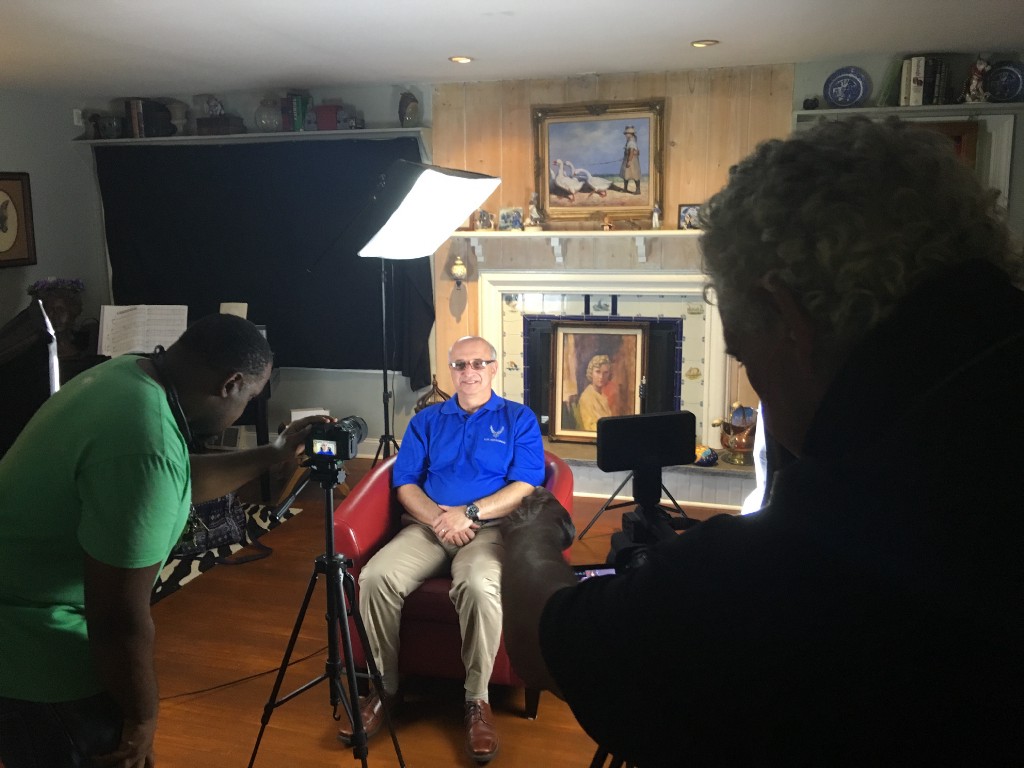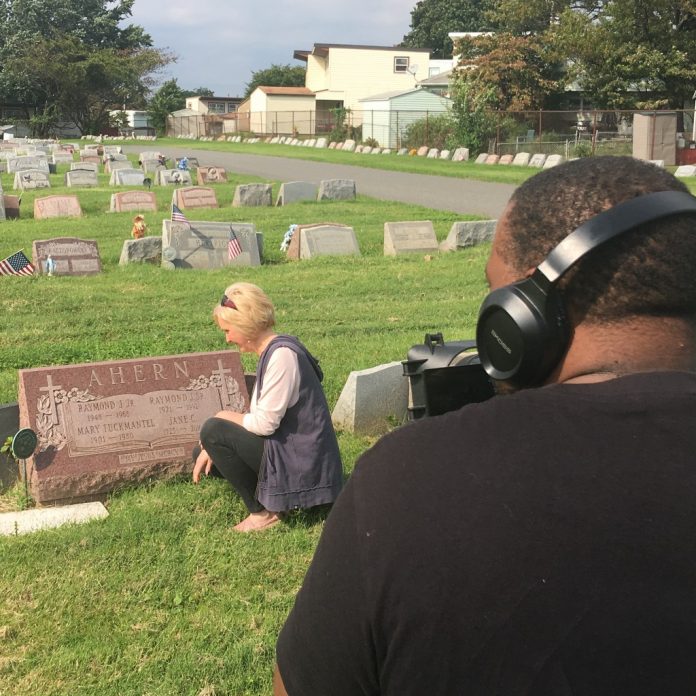A documentary about the 27 Father Judge graduates who made the ultimate sacrifice in Vietnam will be shown at the school.

One by one, Marianne Ahern pulled objects out of the wicker box where she stores things that remind her of her brother, and held them up to the camera. Among them are a Snoopy Vs. the Red Baron sweatshirt and a stuffed toy cat that’s now disintegrating. They were both objects given to her by her brother Raymond. She remembered asking her parents for the $5 cat, which, in the 1960s, was a “significant” price for her family, she said.
“I was crying because my parents wouldn’t get it, and he bought it for me,” she said.
Showing the contents of the box was an emotional experience for Ahern.
“I haven’t shown these pieces to very many people,” she said.
She was recounting her family’s story for filmmakers of Remembering the 27 Crusaders, the documentary that will shed light on the 27 Father Judge High School graduates who were killed in the line of duty in Vietnam. The documentary will premiere Nov. 9 at the school with a closed screening for the families of the Crusaders, and will host five free screenings open to the public Nov. 10 and 11.
Public screenings will take place in the Judge auditorium, 3301 Solly Ave., on Saturday, Nov. 10, at 10 a.m., 1 p.m. and 4 p.m. and on Sunday Nov. 11, at 10 a.m. and 1 p.m.
The documentary will showcase stories like Ahern’s — stories that went largely untold for 50 years.
“Our lives became about his death. That was it,” Ahern said. “It was the reason for doing or not doing virtually anything from that moment on. It was not something that was dealt with in any kind of healthy way.”

While interviewing the surviving family members, filmmakers Shawn Swords of Irish American Films and John Ricciutti of Radnor Studio 21 found that a recurring theme was the family members had no healthy way to deal with the trauma. The first act of the doc will profile Northeast Philadelphia during the time period, including PTSD not being as widely recognized as it is now, the little emotional support or counseling available, and the working-class families being impacted who likely couldn’t afford it.
“The neighborhood was supportive [of the families], but after that no one talked about it,” Swords said. “Mothers had mental issues and became reclusive, holidays didn’t get celebrated. Life just stopped.”
Raymond Ahern was drafted in the war and was 20 years old when he was killed. When Ahern was 12, she was home alone Nov. 26, 1968, just before Thanksgiving when Army officers came to the house with the news. Her mother was at the store buying the Thanksgiving turkey.
“As soon as I see these guys, I know he’s dead,” she recalled. “But they can’t tell me that, because I’m not the official person they were told to deliver the news to.”
The officers requested they take her to the grocery store to meet her mom, rather than having her see the Army vehicle when she came home.
When she found her mother in the store, she told her the officers wanted to talk to her.
“She just started crying,” Ahern said. “I reached out for her hand and walked her out the door.”
They didn’t celebrate Thanksgiving that year, or Christmas. In fact, the holidays never happened again for her family. Marianne and her surviving brother Bob would celebrate Thanksgiving at a friend’s house and want to celebrate Christmas, but their parents never put up a tree again.
“I’m not saying it was right, but it was the way she handled it,” she said.
The 27 soldiers, who graduated in the 1960s, make up the largest number of students killed in an active Catholic or private school in the entire country. It shared that record with fellow Philadelphia school Cardinal Dougherty High School, which closed in 2010. Thomas Alva Edison High School in North Philadelphia has the highest number of soldier deaths from Vietnam of any public school at 64.
Production began in March. Because there is limited runtime to fully tell each of the 27 Crusaders’ stories, Swords said they will release an addendum after the documentary is complete that will give a biography of each of the 27.
“It’s emotional, talking to person after person about the most intimate, devastating moment of their lives and how they’re reacting to it,” he said.

Larry Vitale was interviewed for the film and took the crew out to his brother Michael’s gravesite at Resurrection Cemetery. While “everyone” in their neighborhood was getting drafted, Michael signed up because he wanted to be a Marine, despite his mother urging him not to. He was 20 when he was killed. The family learned on April 16, 1969, their mother’s 42nd birthday.
“She never wanted to celebrate her birthday,” said Rita, Larry and Michael’s sister. She did not interview for the movie. Talking to the Times was the first time she ever spoke about her experience publicly.
“Our mother never gave up on us,” she said. “She made a remark that if it wasn’t for me or my brother, there would be no reason for her to be alive.”
Larry and Rita remember Michael as being mild-mannered, responsible and with a lot of friends. He showed up to every football game Larry played in Wissinoming. They recalled a story where he lost his class ring after possibly leaving it on the hood of a friend’s car, only for it to wind up back at the house “days or years” later.
“His story is written out there already,” Larry said. “We know everything about the war. The documentary wanted to know what happened inside the house.”
Swords said the documentary will highlight monuments that remember the fallen, and will focus on ways the families found to heal.
“In so many cases, getting someone to listen and acknowledge the sacrifice you made and the impact it had on your family, you need to articulate that as part of the therapeutic process,” Swords said.
Father Judge hosts memorials around Veterans Day, which Larry and Rita attended for almost 50 years. Larry said he noticed mothers didn’t talk to other mothers, and fathers didn’t talk to other fathers.
“It was almost like that mother and father couldn’t bring another story into their home,” he said. “We’re supposed to listen to someone else and comfort them and help them out. But for a mother and father to leave there with more emotions… I think now with the movie, maybe that will all come out. Even though we can’t talk about it, we can see it and hear it.” ••





